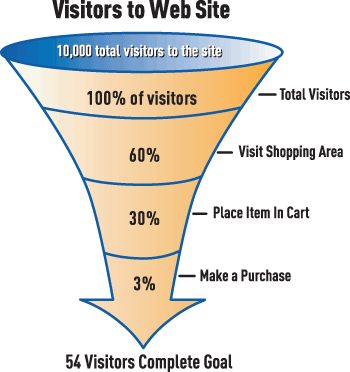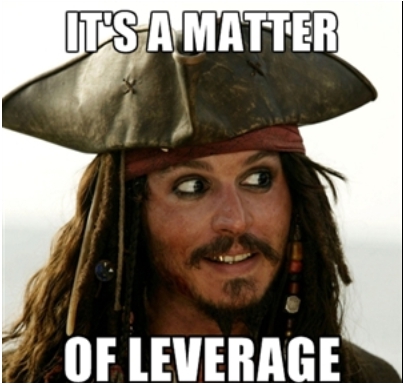
Source: Sandia.gov
Over the years, as I’ve come to value my time more and more, I’ve repeatedly turned to the concept of levers when I’ve needed to accomplish more in less time. Archimedes stated it simply: Give me a lever long enough, and a fulcrum on which to place it, and I shall move the world.
A long lever, placed in the right position, can amplify the effort of the user by an order of magnitude. I don’t know about you, but I love getting more results from less effort 😉
Bill Gates said it best: “I choose a lazy person to do a hard job. Because a lazy person will find an easy way to do it.”
You need to learn to think like a lazy person!
When approaching a task, or a goal of any kind, I first step back and examine what it is I’m really trying to accomplish, and then I try to determine the easiest way to accomplish that task without sacrificing the quality of the results. I call this my MVE, minimum viable effort.
This thought process adds a little time upfront, but always ends up saving me time in the long run, as I’m invariably able to find the approach that allows me to do more with less.
Since I work in the service business world, I’ll use an example from there. For most businesses, one of the easiest and most valuable levers you could possible pull is pricing.
Want to make more? Charge more.
I have a number of friends who own their own businesses, and when we chat and get to talking about business, and they ask me for advice, I almost always tell them the same thing: raise prices.
If you’re really busy, raise prices. If money is tight, raise prices. Hate the type of customers you’re getting, raise prices. In fact, keep raising prices periodically until things start to feel a little dry, and then dial back.
The biggest mistake most people make, business owners and freelancers alike, is charging too little. When you raise prices, you get to run an experiment to see what the market will bear for what you provide. If you’re really busy with projects, or can’t keep up with demand, the chances are good that you’re not charging enough, and that’s a great lever to pull.
I read a great eBook recently that talks about pricing, and I loved it (seriously, read this book, especially if you do freelance work; it will transform the way you think about pricing): Breaking the Time Barrier
More Conversions > More Traffic
Here’s another good example. I do online marketing, primarily SEO, and I regularly get clients and potential clients who “want to rank better”. I immediately follow-up by asking why, they say “we want more traffic”, and after some back and forth the answer always comes down to “we need to make more money online”. Of course. It’s called the bottom line for a reason.
Here’s the thing…these people come looking for SEO, but most of them have never tried, or in many cases even heard of, conversion rate optimization. 95 times out of 100, their conversion process is poor to average, and it’s clear at a glance that there’s major room for improvement there. Like, really? Let me get this right…you have a website, that website makes you money, and you haven’t considered improving your conversion process?

Source: moz.com
No offense, but if 100 people hit my site, and only 3 of those take an action, I’ve failed in some way. I’ve seen plenty of sites with conversions rates of 10% or more, and some over 20%…you just need to know your audience, craft your message carefully, and make the process of conversion as quick, simple and painless as possible. The fact that 2-3% is about average for conversion rates just goes to show that most people don’t know how to pull this lever!
Now don’t get me wrong, SEO is great, but if it’s done on a site that converts poorly, it’s a short lever. Increasing traffic to a site (good traffic, traffic that is likely to convert) usually isn’t cheap. In the case of SEO, it can take many months if not years to drive a significant increase in traffic, and SEO definitely isn’t cheap if it’s being done the right way. Once again, a short lever.
Now, conversion rate optimization on the other hand, that’s a LONG lever. I’ve seen enormous improvements in conversion rates on a site just by making simple changes to a form (changing the wording a bit, maybe removing a form field or two). For one of my clients, I removed 2 lines from a form and changed the color (to provide a better contrast) and wording of the CTA button, and their conversion rate almost doubled.
It would have taken me ages to double their traffic through SEO, but the change I made to their form took me a few hours of tweaking and testing.
With conversion rate optimization, you can get way more cash out of your existing traffic, and hit your goals handily, all by making changes to your site that could take a matter of hours to complete. That doesn’t mean SEO or paid search or any other channel isn’t worth investing in, but if you need to make more money online, improving your conversion funnel is almost always the best place to start, the most lucrative lever to pull.
Then, once you’ve sorted that out, you can pour money into those other online marketing initiatives and get way more ROI from your budget than you otherwise would have. Not only do you make more money, but you waste less money as well. Win win.
It all comes down to levers. Find the right lever. Pull it. Stop wasting time.

You’re welcome 🙂
